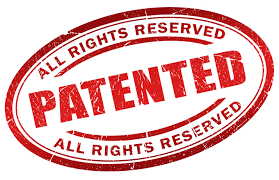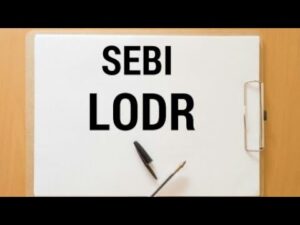OVERVIEW
A patent is a right granted to an inventor by the federal government that permits the inventor to exclude others from making, selling or using the invention for a period of time. The patent system is designed to encourage inventions that are unique and useful to society.
A patent cannot be obtained for a mere idea or suggestion. The inventor must have figured out the concrete means of implementing his or her ideas in order to get a patent. A patent also will not be granted for an invention with no legal purpose or for an unsafe drug.
Patent is granted for an invention. An invention is defined as “a new product or process involving an inventive step and capable ofindustrial application.” Therefore, the criteria for an invention to be patentable
are –
a. It must be novel
b. It must have an inventive step and
c. It must be capable of industrial application.
Further, the invention should not fall under any of the categories of“Inventions- non-patentable” mentioned under thePatents Act, 1970.
Novelty : An invention is new (novel) if it has not been anticipated by publication in any document any where in the world or used in the country or prior claimed in an application for patent in India or form part of the knowledge, oral or otherwise, available within any local or indigenous community in India or elsewhere before the date of filing of patent application or date of priority, that is, the subject matter has not fallen in the public domain or that it does not form part of the state of the art.
An inventor applying for a utility patent must prove that the invention is useful. The invention must have some beneficial use and must be operable. A machine that will not operate to perform its intended purpose would not be called useful, and therefore would not be granted a patent. A useful invention may qualify for a utility patent only if it falls into one of five categories: a process, a machine, a manufacture, a composition of matter, or an improvement of one of these.
INVENTIONS NOT PATENTABLE UNDER THE INDIAN PATENT ACT,1970
The following inventions are not patentable under the Patents Act,1970 :-
- an invention which is frivolous or which claims anything obviously contrary to well established natural laws;
- an invention the primary or intended use or commercial exploitation of which could be contrary to public order or morality or which causes serious prejudice to human, animal or plant life or health or to the environment;
- the mere discovery of a scientific principle or the formulation of an abstract theory or discovery of any living thing or non-living substance occurring in nature;
- the mere discovery of a new form of a known substance which does not result in the enhancement of the known efficacy of that substance or the mere discovery of any new property or new use for a known substance or of the mere use of a known process, machine or apparatus unless such known process results in a new product or employs at least one new reactant.
- a substance obtained by a mere admixture resulting only in the aggregation of the properties of the components thereof or a process for producing such substance;
- the mere arrangement or re-arrangement or duplication of known devices each functioning independently of one another in a known way;
- a method of agriculture or horticulture;
- any process for the medicinal, surgical, curative, prophylactic diagnostic, therapeutic or other treatment of human beings or any process for a similar treatment of animals to render them free of disease or to increase their economic value or that of their products.
- plants and animals in whole or any part thereof other than micro organisms but including seeds, varieties and species and essentially biological processes for production or propagation of plants and animals;
- a mathematical or business method or a computer programme per se or algorithms;
- a literary, dramatic, musical or artistic work or any other aesthetic creation whatsoever including cinematographic works and television productions;
- a mere scheme or rule or method of performing mental act or method of playing game;
- a presentation of information;
- topography of integrated circuits;
- an invention which in effect, is traditional knowledge or which is an aggregation or duplication of known properties of traditionally known component or components.
TYPES OF APPLICATION
- PROVISIONAL APPLICATION– A provisional application is an application which can be filed if the invention is still under experimentation stage. Filing a provisional specification provides the advantage to the inventor since it helps in establishing a ―priority date of the invention. Further, the inventor gets 12 months’ time to fully develop the invention and ascertain its market potential and to file the complete specification.
- ORDINARY APPLICATION– An application for patent filed in the Patent Office without claiming any priority either in a convention country or without any reference to any other earlier application under process in the office. Such type of application is known an ordinary application.
- CONVENTION APPLICATION– An application for patent filed in the Patent Office, claiming a priority date based on the same or substantially similar application filed in one or more of the convention countries is known as a convention application. In order to get convention status, an applicant should file the application in the Indian Patent Office within 12 months from the date of first filing of a similar application in the convention country.
- PCT INTERNATIONAL APPLICATION – An Application filed in India as Receiving Office (RO) under Patent Cooperation Treaty is an international application which can be filed in more than 150 countries by a single application.
- PCT NATIONAL PHASE APPLICATION – When an international application is made according to PCT designating India, an applicant can file the national phase application in India within 31 months from the international filing date or the priority date, whichever is earlier.
- PATENT OF ADDITION– When an invention is a slight modification of the earlier invention for which he has already applied for or has obtained patent, the applicant can go for patent of addition if the modification in the invention is new. One of the benefits of filing patent of addition is that there no need to pay separate renewal fee for the patent of addition during the term of the main patent and it expires along with the main patent.
- DIVISIONAL APPLICATION – When an application claims more than one invention, the applicant on his own or to meet the official objection on the ground of plurality or distinct invention may divide the application and file two or more applications, as the case may be for each of the inventions. This type of application, divided out of the parent one, is known a Divisional Application. The priority date for all the divisional applications will be same as that of the main (the Parent) Application (Ante-dating).
PATENT REGISTRATION WORKFLOW

TERM OF PATENT
The term of every patent granted is 20 years from the date of filing of the application. However, for an application filed under the national phase under Patent Cooperation Treaty (PCT), the term of the patent will be 20 years from the international filing date accorded under PCT.
__________________________
Source: http://www.ipindia.nic.in/
Disclaimer: The information given in this document has been made on the basis of the provisions stated in the Act/Rules/laws for general awareness. It is based on the analysis and interpretation of applicable laws as on date. The information in this document is for general informational purposes only and is not a legal advice or a legal opinion. You should seek the advice of legal counsel of your choice before acting upon any of the information in this document. Under no circumstances whatsoever, we are not responsible for any loss, claim, liability, damage(s) resulting from the use, omission or inability to use the information provided in the document.




